Despite this record mild winter, our electrical needs have proved too demanding for our shoreside system. A month ago, while it was still cold, complacency in managing our “3 ring circus” of heaters led to some melted plastic inside an old terminal block in our simple onboard AC system. (“Do you smell burning rubber?”) I’m glad we quickly averted a potentially dangerous situation.
After some debate we decided to bring the AC system up to current standards even though we would only be relying on it for a few more months. (While cruising, we plan to use an inverter that converts 12 volt direct current from our battery bank for our 110 volt alternating current electrical needs.)
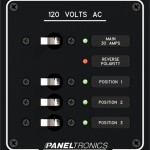
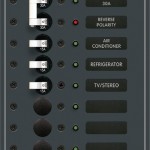
Our choices are the Paneltronics (left) or Blue Seas (right). The Paneltronics is $40 cheaper, but after doing some research online, ABYC standards state that the AC main breaker switch needs to be double pole, and clearly, only the more expensive Blue Seas panel has the main switch double poled (the switch taking up 2 switch spots). I’m not even sure why panels that are not up to code are being produced and sold, but that’s a rant I’m not going to get into. And although I’m sure the Paneltronics panel would work for our needs I decided for the Blue Seas panel.
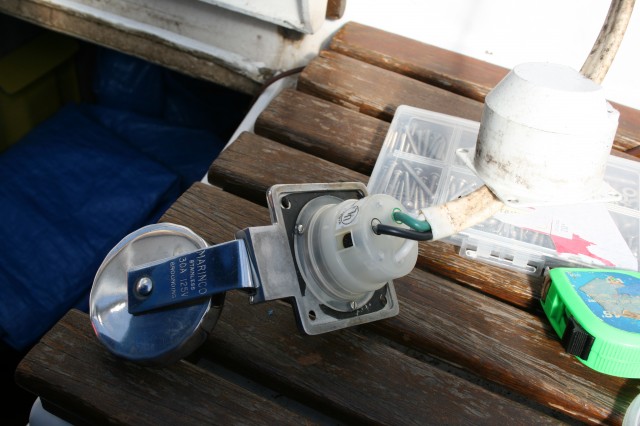
I rewired the entire system from the shore power outlet using new 10 gauge wire. The wire run length was the maximum 10 ft run as allowed by ABYC to the main breaker and panel.
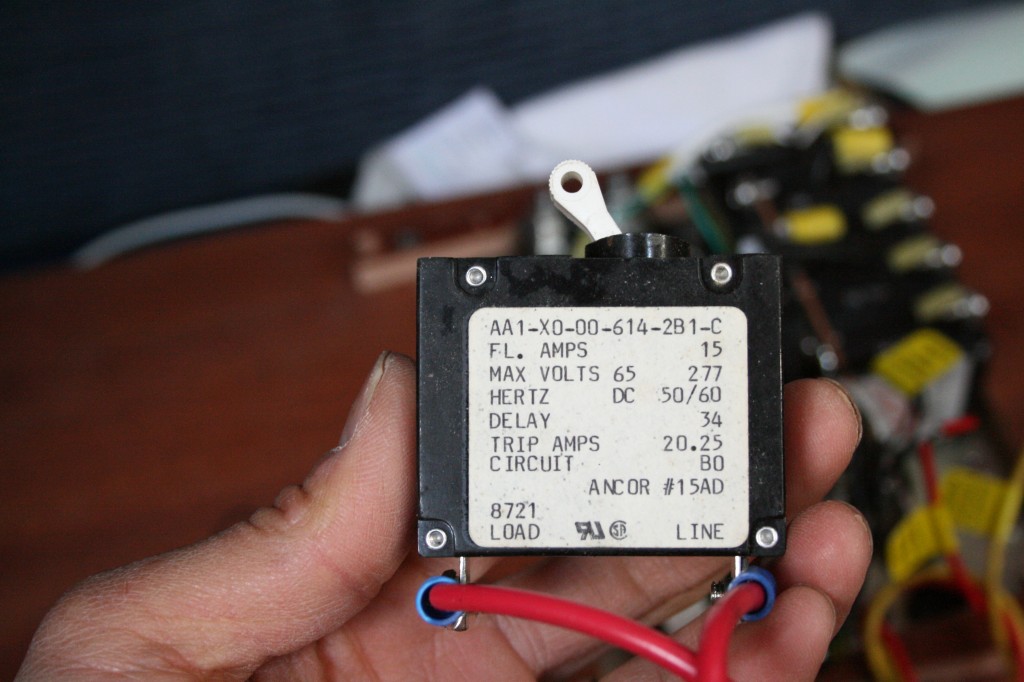
Notice how the 15 amp circuit says it trips at 20.25 amps. Hmmm. This originally led us to overload the system when we thought we were managing just fine. I’ll make sure that won’t happen again.
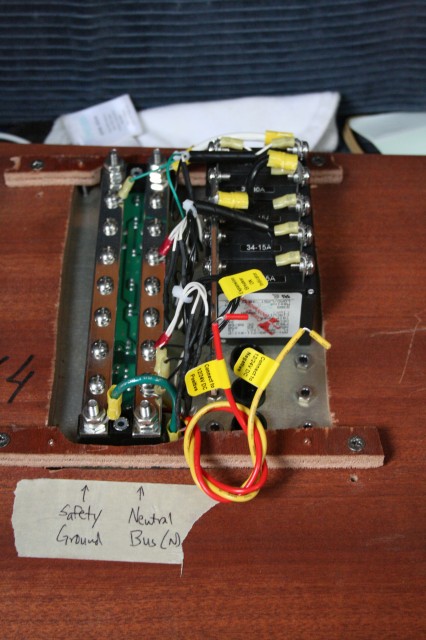
For the rewire, I used 12 gauge wire from the panel to 4 new GFCI outlets on 2 separate breakers. The insides of the electrical panel comes all prewired. I just need to connect the wires.
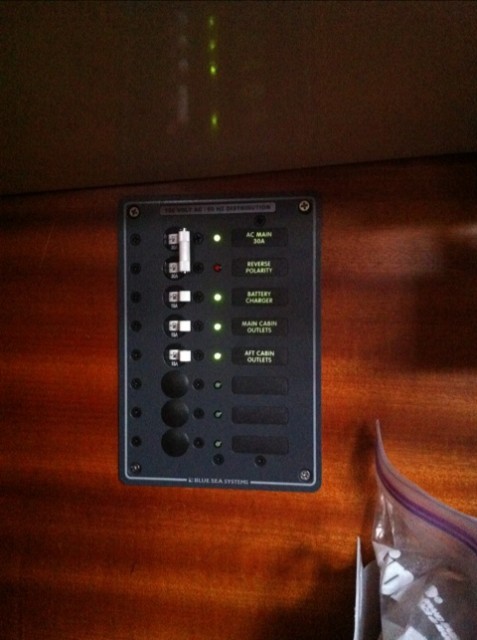
And the finished AC electrical panel. I’m now thinking of redoing the DC panel and wiring with all the new items I’m installing (autopilot, fans, pumps, etc)

The reason for the ABYC requirement for a double-pole AC main breaker is simple. If the shorepower circuit has a reverse polarity problem, if you shut down a single pole breaker, the AC circuits on the boat will still be hot, even though the breaker is thrown. The double breaker ensures that if you throw the main AC breaker, that the AC system is not going to be live, even if the shorepower is reversed polarity.
Ahhh, the joys of electrical systems. Why on earth don’t they make all breakers with double-poles, then?
The Paneltronics uses a 2-pole breaker as well; it just doesn’t have double handles. That’s a common way of making 2-pole breakers, as it makes for a simpler more attractive appearance. It still breaks both conductors. In fact you may notice that the position below it is blank; that’s because in the back the breaker is bigger than in front.
Cool, thanks! It’s something we definitely didn’t know two years ago. Luckily, Tig is a boat electrician now and knows better ;).